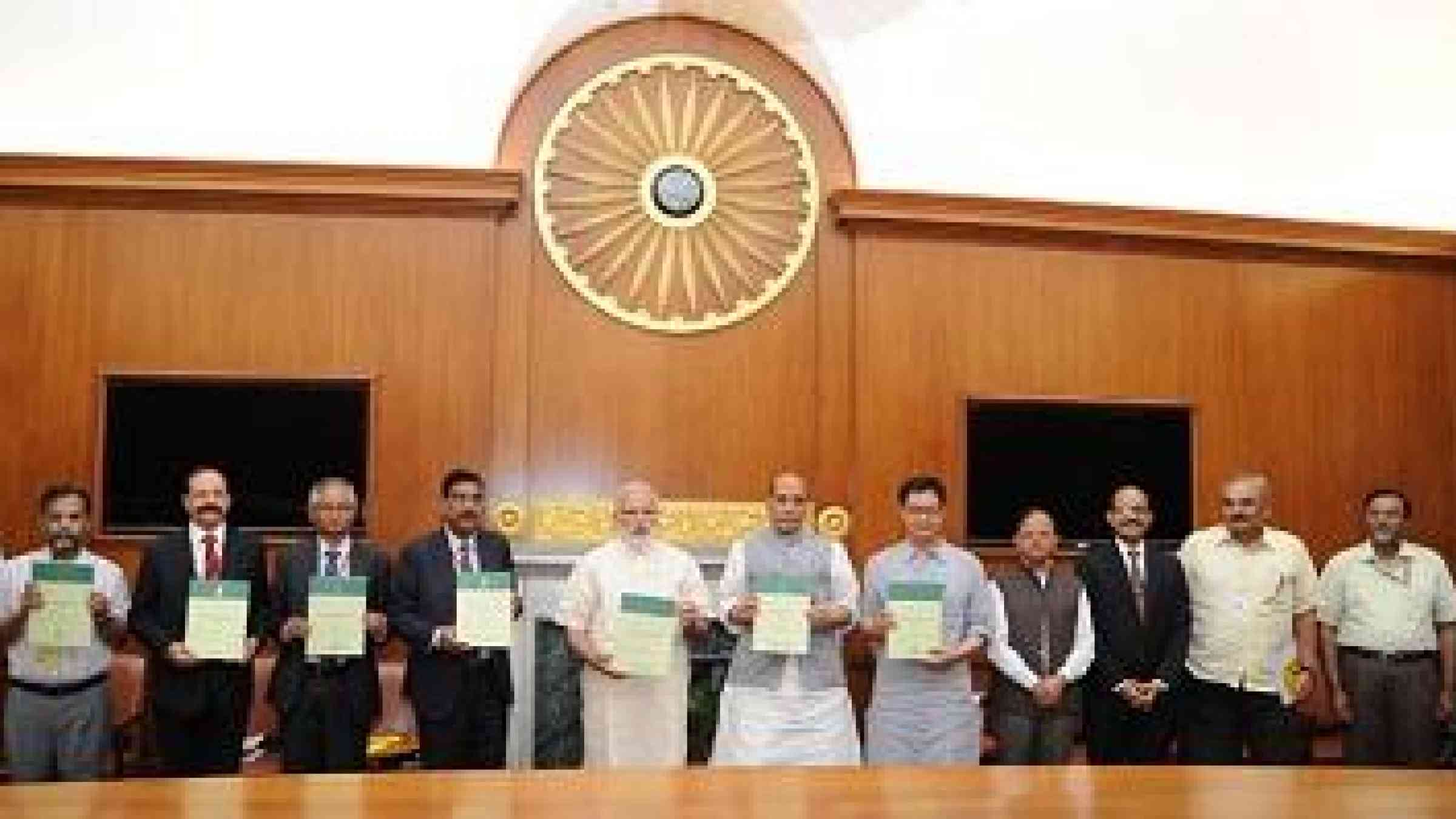India puts Sendai Framework into operation

NEW DELHI, 1 June 2016 - The Prime Minister of India, Mr. Narendra Modi, today released the country’s first ever National Disaster Management Plan, a document based on the global blueprint for reducing disaster losses, the Sendai Framework for Disaster Risk Reduction.
A statement released today by the Prime Minister’s Office said: “It aims to make India disaster resilient and significantly reduce the loss of lives and assets.”
“The plan is based on the four priority themes of the “Sendai Framework, namely: understanding disaster risk, improving disaster risk governance, investing in disaster risk reduction (through structural and non-structural measures) and disaster preparedness, early warning and building back better in the aftermath of a disaster,” it added.
Publication of the plan is further evidence of India’s efforts to strengthen disaster risk governance which included the establishment two years ago of a National Platform for Disaster Risk Reduction and the recognition of Minster of State for Home Affairs, Mr. Kiren Rijiju, as a UNISDR Champion of Disaster Risk Reduction.
"Our endeavour in the National Disaster Management Plan has been to take along all stakeholders in our efforts to build a disaster-resilient India. We have fully embraced the Sendai Framework, both in letter and in spirit, while formulating this plan, and it reaffirms our commitment to disaster risk reduction," said Minister Rijiju.
The head of UNISDR and the Secretary-General’s Special Representative for Disaster Risk Reduction, Mr. Robert Glasser, congratulated Prime Minister Modi and his government.
Mr. Glasser said: “On behalf of the UN Office for Disaster Risk Reduction, I would like to extend congratulations to the Indian government for setting such a fine example to the rest of the world when it comes to political commitment to reducing disaster losses and managing disaster risk.
“The challenges of reducing disaster risk in a country the size of India are formidable but the Indian government is demonstrating that where there is a will there is a way. I am pleased to note that the plan is based on the Sendai Framework for Disaster Risk Reduction which was adopted last year by UN Member States as a global blueprint for reducing disaster losses.
“The Government of India is one of the first in the world to come out publically with a plan which seeks to implement the four priorities for action of the Sendai Framework, focussed on spreading a greater understanding of disaster risk through education and public information, investing in disaster resilient infrastructure and committing to improved disaster preparedness and building back better in recovery, rehabilitation and reconstruction.
“This plan is a further boost to disaster risk governance in India following the inauguration of India’s National Platform for Disaster Risk Reduction two years ago. The country’s faces a formidable range of both man-made and natural hazards as evidenced by the drought which is currently affecting over 300 million people.”
According to the Prime Minister’s Office, the new plan covers all phases of disaster management, from prevention and mitigation to response and recovery. It will also ensure that disaster risk reduction is folded into the work of all parts of the administration at all levels of government.
“The plan has a regional approach, which will be beneficial not only for disaster management but also for development planning,” the office noted
“It is designed in such a way that it can be implemented in a scalable manner in all phases of disaster management. It also identifies major activities such as early warning, information dissemination, medical care, fuel, transportation, search and rescue, evacuation, etc. to serve as a checklist for agencies responding to a disaster. It also provides a generalized framework for recovery and offers flexibility to assess a situation and build back better."
In addition, it said, the plan puts a focus on the need for greater information, education and communication activities in order to prepare communities to cope with disasters.
India’s 2005 Disaster Management Act laid down institutional, legal, financial and coordination mechanisms at the National, State, District and Local levels and ushered in a paradigm shift from a “relief-centric approach to a more proactive regime that lays greater emphasis on preparedness, prevention and mitigation.” The National Disaster Management Authority is headed by the Prime Minister.
The Minister of Home Affairs, Mr. Rajnath Singh, Minister Rijiju, and senior officers of the Prime Minister’s Office, Ministry of Home Affairs and National Disaster Management Authority were all present today at the launch of the new national plan.
In November, India hosts the biennial Asian Ministerial Conference on Disaster Risk Reduction, which will be a key event in the region’s Sendai Framework implementation drive.